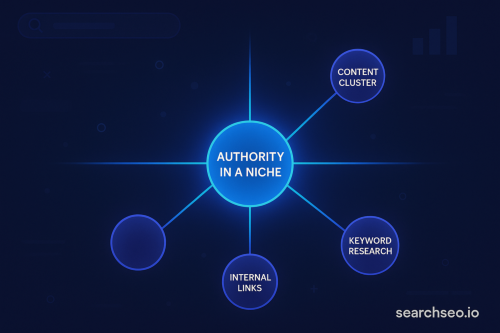If you've checked your Google Analytics or Search Console and noticed a sharp decline in website traffic, you're not alone. Whether you're dealing with a slow decline or a sudden nosedive, figuring out why your site is losing organic traffic can feel like navigating a maze blindfolded. In this guide, we’ll walk you through the most common causes, how to diagnose them like a pro, and the SEO tactics that actually help you bounce back—based on real-world insights from the frontlines of traffic recovery.

First, Don’t Panic—Diagnose Before You Act
Before you overhaul your site or fire your SEO agency, take a breath. A drop in traffic could be caused by a range of things—from algorithm updates to simple tracking errors.
Here’s how to start:
- Confirm it’s real. Cross-check traffic drops in both Google Analytics and Search Console.
- Define the scope. Is it all traffic or just organic? Specific to a page or keyword?
- Check timeframes. Did it start after a site update, migration, or Google algorithm change?
The 10 Most Common Causes of a Sudden Drop in Website Traffic
1. Google Algorithm Updates
Google is constantly evolving. Core updates can shake up rankings overnight. Check SEO news sources and compare your traffic timeline with known update dates.
2. Technical SEO Issues
A broken robots.txt file, accidental noindex tags, crawl errors, or site speed issues can tank your visibility.
Check with:
- Google Search Console > Coverage and Enhancements
- Screaming Frog or Sitebulb for crawl diagnostics
3. Tracking Errors (It’s Not You, It’s Analytics)
A misconfigured Google Analytics tag or a switch to GA4 without proper setup can falsely report a traffic drop.
4. Lost Backlinks or Decline in Referral Traffic
If high-authority sites removed links to your content, your ranking authority may take a hit.
5. Content Changes or Pruning
Did you recently update or delete old blog posts? Removed pages can remove rankings—especially if they were bringing long-tail traffic.
6. Increased Competition
New players entering your niche or existing competitors ramping up their SEO game can knock you down.
7. Manual Actions or Penalties
If you’ve been dabbling in grey hat SEO, traffic exchange, or CTR manipulation, it could’ve triggered a manual penalty. Check the Manual Actions report in Google Search Console. Avoid tactics that resemble bot traffic or traffic bots unless you know what you’re doing.
8. Changes in User Behavior or Seasonality
Sometimes it’s not you—it’s your audience. Seasonality, market trends, or even news events can shift search demand.
9. Site Migration or Redesign Mistakes
Did you recently switch domains, update your URLs, or relaunch your website?
10. Indexing Problems
Sometimes your pages simply fall out of Google’s index.
Step-by-Step: How to Diagnose Your Traffic Drop
- Segment your traffic. Filter by source (Organic, Direct, Referral, Paid) to isolate organic issues.
- Audit your top pages. Did any high-performing pages tank?
- Check keyword rankings. Use a rank tracker to spot shifts.
- Investigate recent changes. Review site updates, CMS changes, plugin installs.
- Compare competitors. Are they rising while you’re falling?
How to Recover Lost Website Traffic
Let’s say you’ve diagnosed the cause. Now what?
If It’s Algorithm-Related
- Update thin or outdated content
- Improve E-E-A-T: Add author bios, cite credible sources, and get more backlinks
- Diversify keyword targeting (long-tail, semantic SEO)
If It’s Technical
- Fix crawl issues, mobile usability errors, and page speed problems
- Submit updated sitemaps
- Restore accidentally noindexed pages
If It’s Content-Related
- Reoptimize underperforming content
- Merge or redirect thin pages
- Refresh stale blog posts with new stats or examples
If It’s User Behavior or Trends
- Shift focus to trending keywords in your niche
- Create new landing pages for seasonal content
How to Prevent Traffic Drops in the Future
- Set up real-time alerts in Google Analytics and Search Console
- Monitor rankings weekly—not just when there’s a problem
- Conduct quarterly SEO audits
- Use tools like SearchSEO to stabilize and grow your SEO traffic through targeted CTR improvements
Final Thoughts
A sudden drop in website traffic isn’t the end of the world—but it is a signal. By staying calm, digging into the data, and taking targeted action, you can bounce back stronger. SEO is a long game, but with the right tools and insights, you’ll stay ahead of the curve.
Ready to boost your CTR and make your rankings more resilient? Try SearchSEO now.


.svg)

.svg)
%201.png)








.svg)